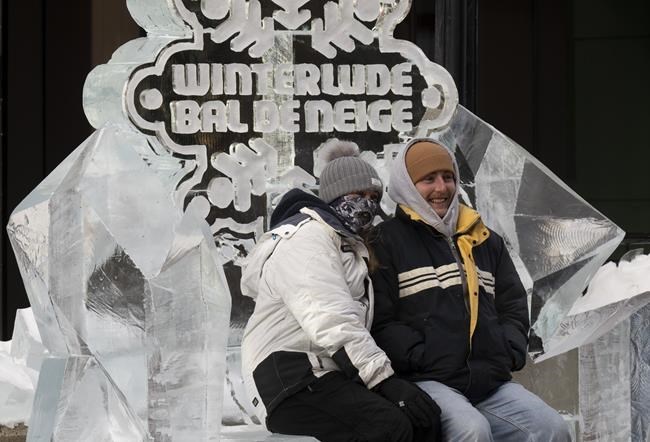OTTAWA — As part of an annual festival celebrating winter, Ottawa's Sparks Street has been lined in recent weeks with ice sculptures depicting everything from animals and flowers to a Tim Hortons cup.Â
But by the time Winterlude wrapped up this past weekend, some of those works of art had been rendered almost unrecognizable by Mother Nature.Â
That was the result of a combination of rain and three consecutive days of temperatures above 4 C last week.Â
The average weather for this time in February is just below -8 C, said David Phillips, senior climatologist for Environment and Climate Change Canada.Â
For many ice sculptors, the changing climate means learning new ways to adapt. Â
Mowafak Nema took second place at the Winterlude ice sculpting competition and said many sculptors are used to battling the elements. Â
“If the weather is too warm there are methods we use, if the weather is too cold there are methods we use,” said Nema.Â
Nema also competed in unseasonably warm weather in Edmonton this winter, which made it very difficult to carve. He said the temperatures forced sculptors to put down their tools and lose a full day of the three-day competition.Â
To try and keep things going, the artists covered their pieces with tarps and used dry ice and snow to preserve their pieces and make them cooler.Â
Nema said he has been dealing with weather as long as he can remember, recalling a day 15 years ago that rain had some sculptures falling apart as the carvers worked.
“I don't see the dramatic change in the weather," he said. "The weather is up and down, I cannot predict it."Â
But the science shows Canada’s winters are warming faster than our other seasons. Phillips said average winter temperatures are now 3.3 C warmer, compared to just 1.5 C in the summer, compared to 1947-48.Â
Going forward, Phillips said climate change will continue to have a significant affect on our winters with fewer days below zero and winters that start later and end sooner.Â
Where there used to be around 28 "real cold days" in Ottawa per winter, Phillips said, there are now about 15 or 16 each year.Â
"By 2080, the models seem to suggest about five or so,” he said. Â
While that is a long way off, the changing climate in the near future will bring more swings in temperatures and more extreme weather.Â
“I can't get over this notion of the fact you can't count on the weather anymore. It used to be that … summers were hot and winters were cold, and now it's almost as if the transition seasons are taking over some of those core seasons,” Phillips said.Â
As for whether this mid-winter melt is a sign of things to come, Phillips said he thinks of it more as a dress rehearsal for what could become the norm in the next 30 to 40 years.Â
This report by The Canadian Press was first published Feb. 24, 2023.
Maya Riachi, The Canadian Press




